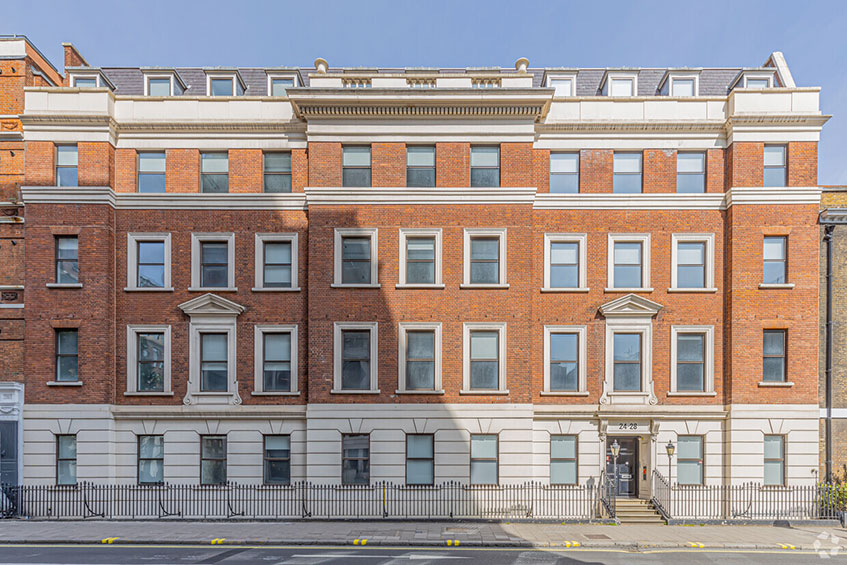At a recent meeting of the US-based Urban Land Institute in Paris, 450 top names from both sides of the Atlantic gathered to discuss the hot topic of the moment, US investment in French real estate.
“The Americans have got nerve, but not necessarily intelligence,” said conference chairman Henri Alster, opening the discussion in the role of devil’s advocate. Alster, managing director of investment advisory firm American European, said the main problem facing American investors was “too much money and not enough opportunity”.
Certainly pressure to invest and the relative difficulty of doing business in Paris were topics that were raised repeatedly during the day.
Since December 1994, US opportunity funds have purchased a string of bad property and loans from French banks, totalling FFr 10.2bn. The most active purchasers have been the Goldman Sachs’ Whitehall Street Real Estate Fund, Morgan Stanley and GE Capital.
Among the vendors are Suez group subsidiary Crédisuez, insurance giant UAP (now merged with Axa), and Consortium de Réalisation, the bad loan division set up by Crédit Lyonnais.
The deals have typically been done at discounts to the book value of the loans ranging from 40% to 60%, with US investors seeking leveraged internal rates of return of more than 20% within three to five years.
All the signs are that the six or seven transactions to date have only scratched the surface of the bad property debt problem in France. Crédit Lyonnais, especially, transferred property and loans valued at FFr50bn into CDR; so far it has sold FFr 4bn worth, including a FFr 1bn portfolio sale to GE Capital at the start of the year.
Typically these sales have been by selective tendering, with five or six bidders invited to make offers on large portfolios. Naturally, there have been disappointments, and there was much discussion in Paris on the merits or otherwise of the competitive bidding process.
Owen Thomas, a managing director of Morgan Stanley & Co in Paris, said: “Based on our experience of the auction process, we do feel frustrated.”
Thomas was too diplomatic to say so, but he was no doubt referring to Morgan Stanley’s failure last autumn to clinch FFr 4.4bn of loans from Crédisuez; moreover, the French bank had been planning to sell a FFr 14bn package of property and loans, but late into the transaction withdrew the properties. Morgan Stanley has also been on the shortlist of bidders for other portfolios, narrowly missing out to competitive bidders.
“One of our key competitive advantages is our resources: where do we spend our time ? Our investment activity is a worldwide business and we are going to look carefully at situations where there is an auction, to understand if there is a willingness by the sellers to transact the deal at the highest price,” said Thomas.
Underlying his comments was a feeling shared by a number of the American speakers that the French institutions were not in every case convinced that they wanted to sell. British developer Howard Ronson, a longtime resident of New York, said he doubted it.
“The US is a free market economy and we have all learned that France is not,” he said. “Very few sellers are in a position to mark to market their sales of property, because of the different problems they have.
“You can sell anything given a willing seller, but are the French willing sellers ?” he added. American purchasers needed a great deal of “patience” to allow the French to work through their problems. “Will the Americans stay around while this is happening ? US investors are being offered deals around the world, and they have a problem because they do not have endless resources in terms of people,” said Ronson.
A number of top French fund managers admitted that they were not willing sellers on the terms at which US investors were looking to buy.
Christian de Gournay, member of the executive committee of insurance group AGF, said his company had deliberately rejected the “appel d’offres” tendering approach, and opted instead to sell property by direct negotiations with a single purchaser.
In 1996, it had sold some FFr 5.5bn of property “gré en gré”, by negotiation. He said vendors that packaged up large quantities of properties and loans for tender were making a “mistake”, because they were accepting discounts in order to compensate the purchaser for the risk of acquiring large portfolios, under competitive circumstances, with necessarily limited time to carry out due diligence work.
AGF had sold mainly residential property in smaller lots to selected purchasers at yields of around 6%, he said. “The price per m2 was attractive to the purchaser, but I couldn’t sell to you Americans at 6%,” he said.
Michel Rouger, president of Consortium de Réalisations, had some rather harsher judgements. US investors were guilty of an “erreur d’analyse” in assuming that the French property crisis was a carbon copy of the American real estate crash prompted in part at least by the savings and loans crisis.
“Nothing is the same,” he said, and Americans seeking to apply the same financial criteria to French property debt were using a false set of assumptions.
In particular, the American tendency to take a short-term view of the property market did not fit with the French approach to real estate, which was “sedentary, patrimonial and one of long-term profitability”. The frenzy created by would-be US purchasers had produced an environment of “false competitiveness”, which did not provide an opening for French and other European bidders looking to buy for longer term returns.
“The procedure of appels d’offres is not the best,” he said, warning US investors that they should not arrive in Paris with too many pre-conceived ideas.
Rouger was ambivalent about further portfolio sales by CDR. The sale to GE Capital had proved that his organisation was “capable of negotiating and dealing”.
But he was not prepared to say that the exercise would be repeated. He planned to make a decision by the summer as to whether to pursue further sales on a large scale, or to continue to hang on to the real estate loans and assets, in the hope of firmer market conditions.
“I am in favour of selling as quickly as possible, and I am not afraid of losses. We are selling assets every day at substantial losses, but we are selling others at significant profits. We are not prepared to sell at any price,” said Rouger, adding that 1997 would be a decisive year in determining a “prix d’equilibre” on property assets.
“If we [the French and the Americans] have not reached agreement between now and the end of the summer, we will separate,” he added.
The discussion of the correct pricing of distressed real estate assets was revealing. Most of the bidders on competitive tenders had “come in reasonably close to each other,” said Henri Alster. “This indicates either collusion, or that they have a common methodology that is reasonably scientific.”
He suggested that the latter explanation was more likely, with US investors carrying out the same sort of portfolio analysis that they had developed to assess the properties sold by the Resolution Trust Corporation in the wake of the savings and loans failures.
Daniel Neidich, general partner in Goldman Sachs Real Estate, said it was important to distinguish between leveraged and unleveraged returns. While geared returns were often quoted at more than 25%, investors were looking for a return on the unleveraged portion of their money in the mid- to low-teens, he said.
Richard Mully, managing director of real estate at Bankers Trust in London, said expectations were being adjusted downwards.
“The required equity internal rate of return being used by a number of investors has fallen from something in the high 20s to low 20s or even high teens now.”
Falling interest rates meant that the cost of leverage would drop, but at the same time “buyers are expecting to have less equity in these deals, so the internal rate of return is falling”. Higher leverage at lower interest rates meant that investors were looking at internal rates of return of 10% to 12% on a deal by deal basis.
“Investors are pricing bids on a deal internal rate of return of 10% to 12%; that’s a more realistic level to bear in mind than the 20% to 25% that people deliberately throw around. The two are consistent,” he insisted.
Mully was also positive about the scope for further property loan and asset disposals from the state-backed defeasance structures. “We expect FFr 10bn to FFr 15bn of asset sales to come out of the sector during 1997,” he said.
But the seminar was lacking in any proof of real rates of return, as purchasers maintained a united front in refusing to discuss exit strategies. Miles d’Arcy Irvine, a co-investor with the Whitehall fund on a number of its acquisitions, said restructuring of loans and asset sales would “take place fairly quickly”, but did not elaborate. Whitehall was being “successful” in working out the portfolios it had acquired from UAP and Crédisuez, he added.
Bertrand de Feydeau, director in charge of property at Axa, said that the impact of foreign, and particularly American, investment on the French market was longterm. “Things are changing very quickly in France; the property market is being transformed,” he said. Property was competing with other asset classes and the French patrimonial culture was giving way to the more “financial culture” that the American investors had brought with them, concluded de Feydeau.
US distressed debt purchases in France
|
Date |
Vendor |
Purchaser |
Assets |
Book Value (FFr) |
|
Dec 1995 |
Barclays |
Lehman Bros CargillLa Salle |
loans |
870m |
|
June 1996 |
UAP |
Whitehall Vines ManagementD’Arcy Irvine |
loans |
3.2bn |
|
Feb 1996 |
Crédisuez |
Whitehall |
property+ loans |
745m |
|
Nov 1996 |
Crédisuez |
Whitehall |
loans |
4.4bn |
|
Feb 1997 |
CDR |
GE Capital |
loans |
1bn |










